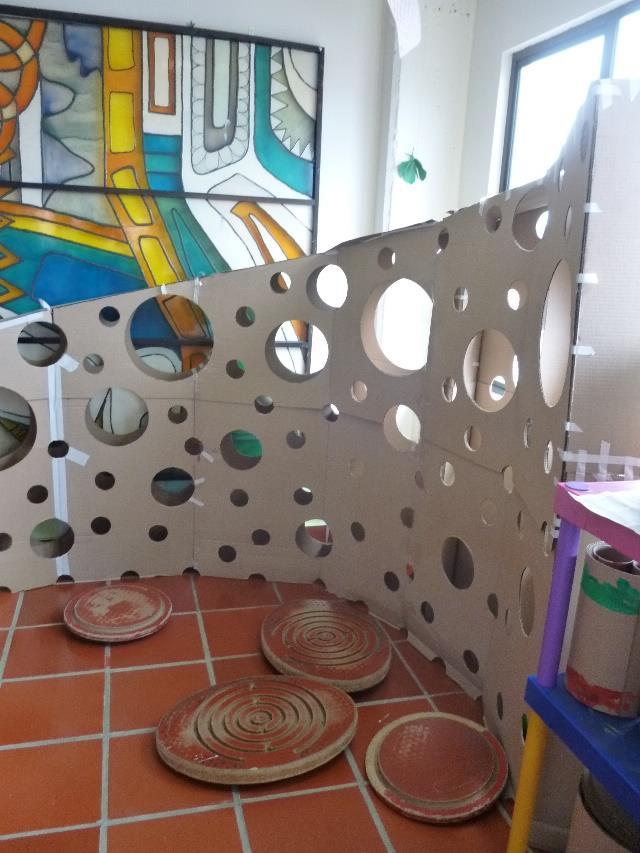ARCHITECTURAL
LIVE PROJECTS as an agency for peace in Colombia
Universidad de los Andes, Bogotá, Colombia

LIVE PROJECTS as an agency for peace in Colombia
Universidad de los Andes, Bogotá, Colombia
Department of Architecture, University of Andes
“
Tell me and I forget. Teach me and I remember. Involve me and I learn.”
This academic exercise invites students to design a comprehensive living space that meets a set of specific variables. The challenge is to design and build an architectural object of small physical scale, but highly conceptual and of high social importance. This process requires reflections on the conceptual, formal, functional, technical and social context that surrounds the design problem. It is intended that the students address the project with a broad understanding of the subject and a thorough study of the variables, so that the outcomes are of the greatest spatial and technical qualities and respond to the specific needs of the community.
Carolina M. Rodríguez Bernal

(Unit Coordinator 2012.1 to date)
Juan Carlos Rojas (2010.2 – to date)
Rafael Villazón (Unit founder 2008.2 2010.1 and 2013.01)


Roland Hudson, Herando Vargas, Maria Claudia Villate, Lucas Oberlaender, Fernando Sierra, Pedro Reissig, Eduardo Aguirre, Enrique Ramírez, Enrique Hernandez, Christiaan Job Nieman, Jose Ignacio Torres, Francisco Bohórquez, Juan Pablo Ortiz, Fanor Serrano, Alejandro Hernandez, Erika Duarte, Clara Montoya.
Universidad de los Andes, Madecentro, Hunter Douglas, Inmunisadora Serrano Gomez, Masisa.
Carolina M. Rodríguez Bernal Benjamin FranklinThis module is part of a unit of three interconnected modules, titled: Project, Theory and Analysis. The aim of this triad is to encourage practical explorations that are supported on specific theoretical framework and structured by systematic, orderly and reflective methods. This represents the ideal environment to develop live projects, hence we have worked on redesigning the three modules in order to augment the design and materialisation process of the enclosures.
The Theory module is structured with two types of exercises. On one hand, case studies that seek to "learn from the experience of others“, and on the other hand, exercises related to the study and application of scientific methods for experimentation in architecture. For example, theories of creative processes, knowledge generation, development of ideas, methods and processes for coordinating projects and managing complexity.
The Analysis module comprises short exercises related to the development of skills and the acquisition of tools for analysis, design, modelling and evaluation of architectural projects.

The Project module is composed by two central exercises related to two complementary architectural concepts: the ephemeral and the permanent. The exercise on the ephemeral aims to explore, through manual and digital tools, formal and material aspects of architectural projects. Students are asked to design and build a 1:1 scale prototype for a temporary exhibition using digital modelling tools and easily accessible materials. The exercise focusing on the permanent is a complete live project for a small-scale architectural space, set within a real context, with specific requirements, scope and constraints.



“I alone cannot change the world, but I can cast a stone across the waters to create many ripples.”

“Architecture is a rare collective profession: it's always exercised by groups. There is an essential modesty, which is a complete contradiction to the notion of a star.”























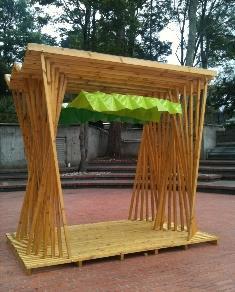



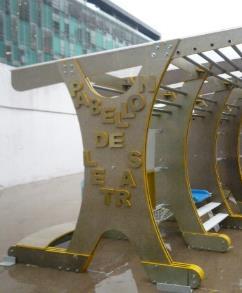

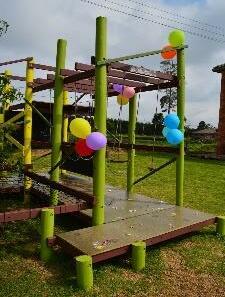
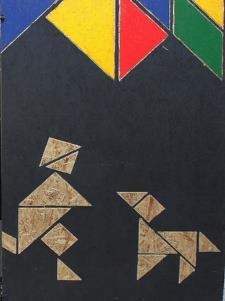




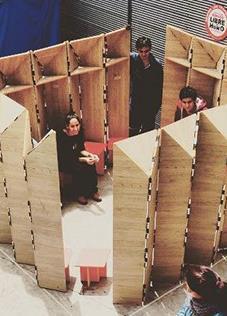


“One of the most rewarding things was to learn how the ‘unexpected’ and the work on site allowed us to have an insight of the project that goes beyond what drawing and models can provide. The ability to go back and forth during the design was crucial to develop teamwork and to understand that the project carried out is potentially a very small incubator of what our professional life would be."
Santiago Ballen, Maria Lucia Castro, Juan Camilo Porras, Iris Florez, Carlos Gomez, Laura Munera, Maria Mazzanti, Maria Nova, Alejandro Moreno, Gabriel Rubiano, Diana Niño, Angela Suarez, Fabian Buitrago .

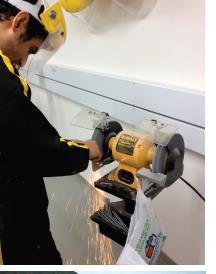
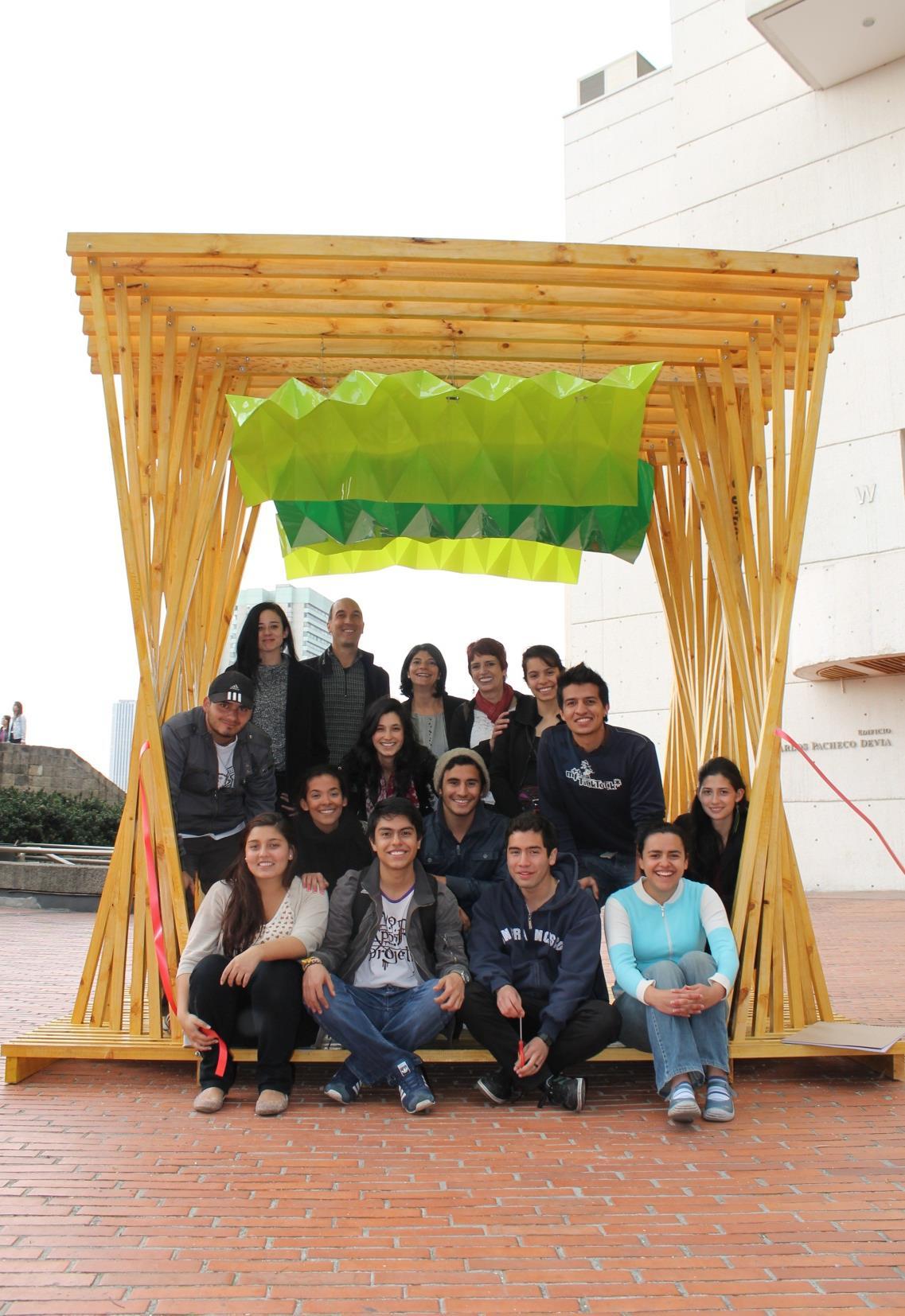
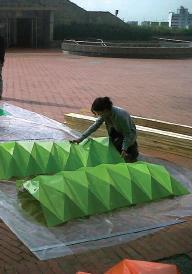



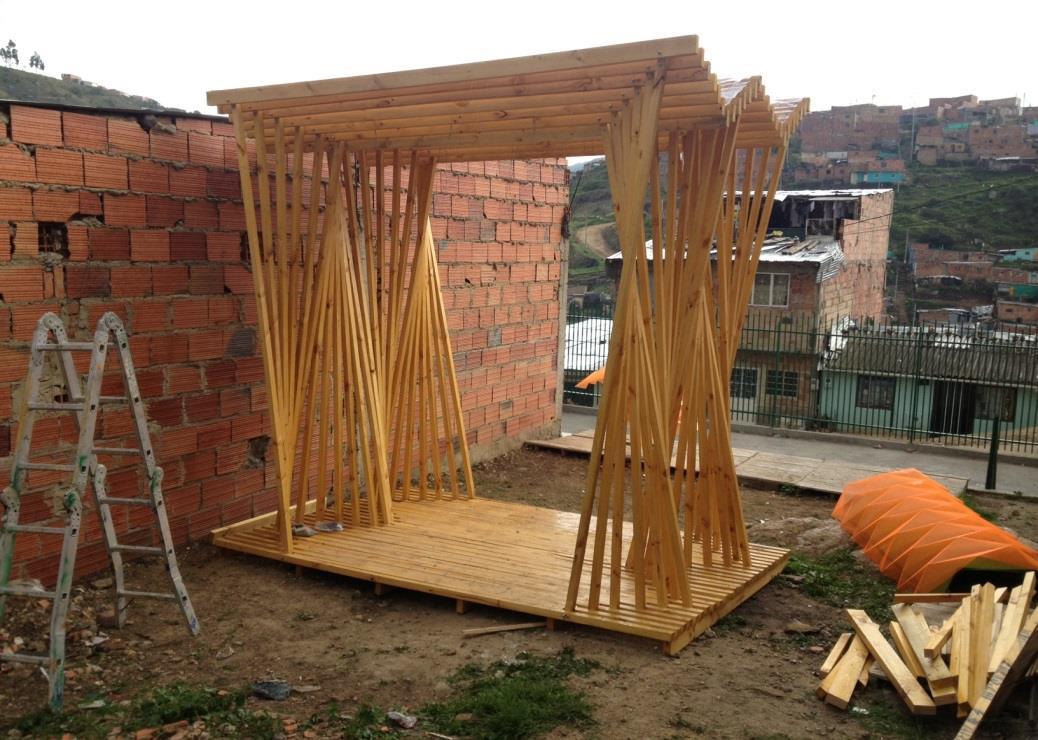

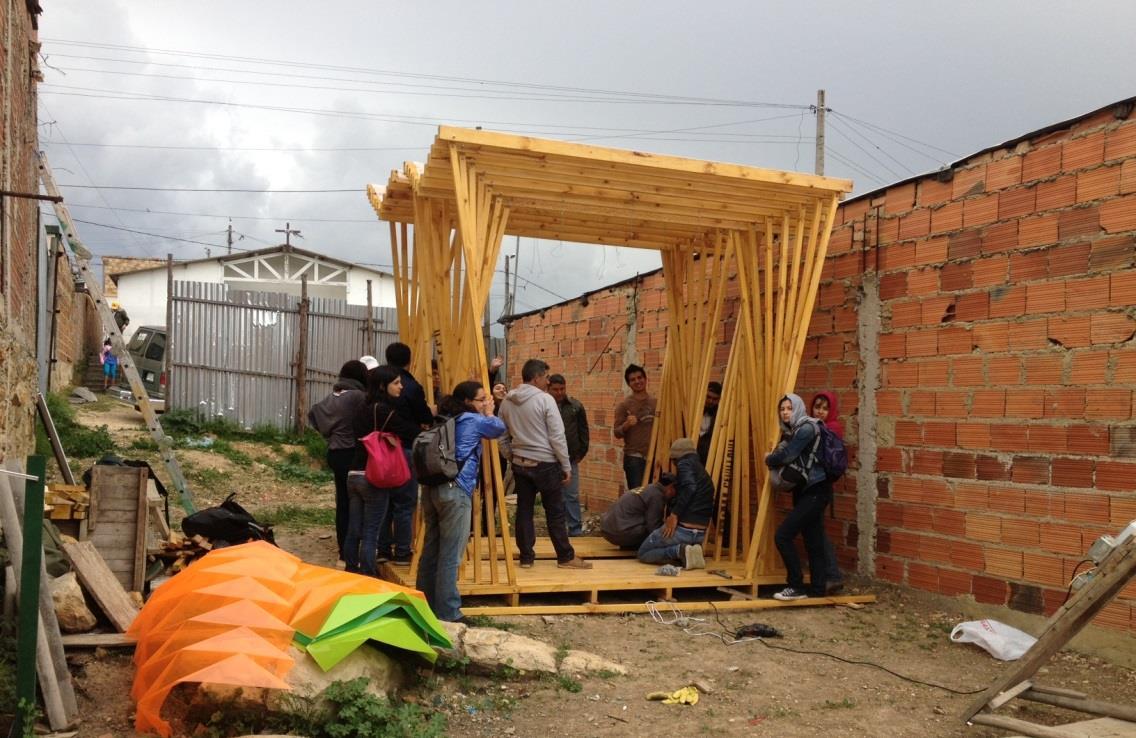





“Fundación Cigarra aims to give hope to the inhabitants of the area around the neighborhood Puertas del Paríso, Ciudad Bolivar, Bogotá. This is an area of extreme poverty comprised mostly of families displaced by armed conflict in the country.”
“The foundation has a kindergarten with 170 children between 3 months old and 18 years old. Here children have a safe place to learn and play, in addition to nutritional, psychological, primary health and dental support. The foundation helps the community with parental workshops and projects to improve the built environment of the neighborhood."
Taken from http://www.fundacioncigarra.org/
“I want to thank you [the project participants] for the donated pavilion ... It looks very creative, and students seem to have had a lot of fun doing it! "
Carolyn Acosta , Director of Fundación Cigarra


“One of the major lessons that this experience leaves is that it is essential to be clear about the specific activities to be carried out [during the design process], their order and prerequisites. Considering the above, we can proceed to construct a schedule of activities and delegate them so that everyone in the group is working efficiently. But also we realised that in an architectural project, even at this small scale, there will always be unforeseen events that need to be resolved in the best way possible at the time that they occur."
Laura Barón , Silvana Bigio, Laura Viviana Ceballos, Carlos Hernández, Juan Sebastián Hurtado, Gina Morales, Ana María Noriega, Carlos Pabón, María Paula Pinilla
Carolina Rodríguez Bernal (coordinator)
Juan Carlos Rojas



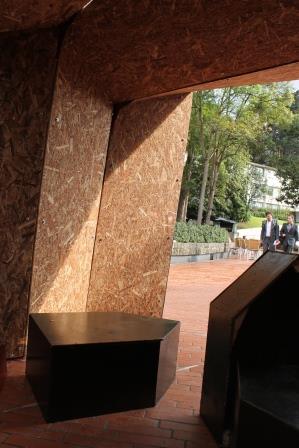


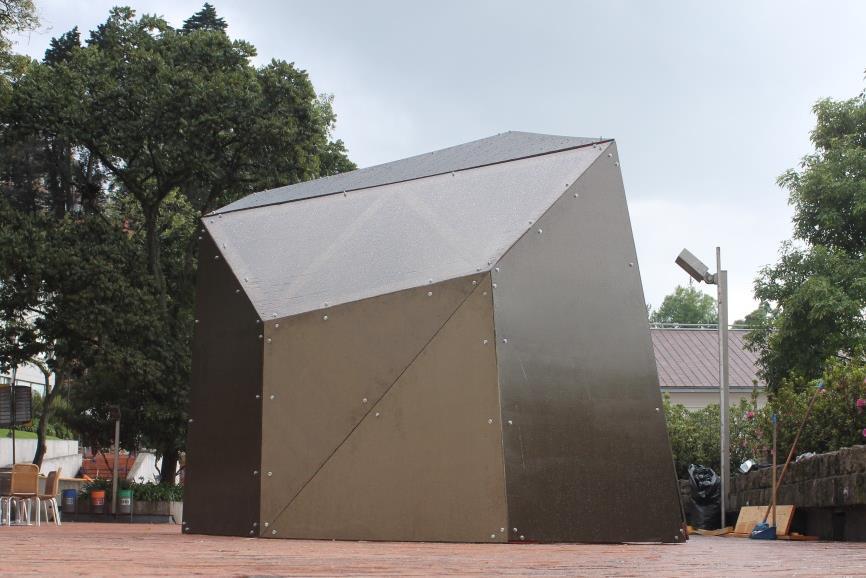
Taken from: http://www.fundacionpiesdescalzos.com

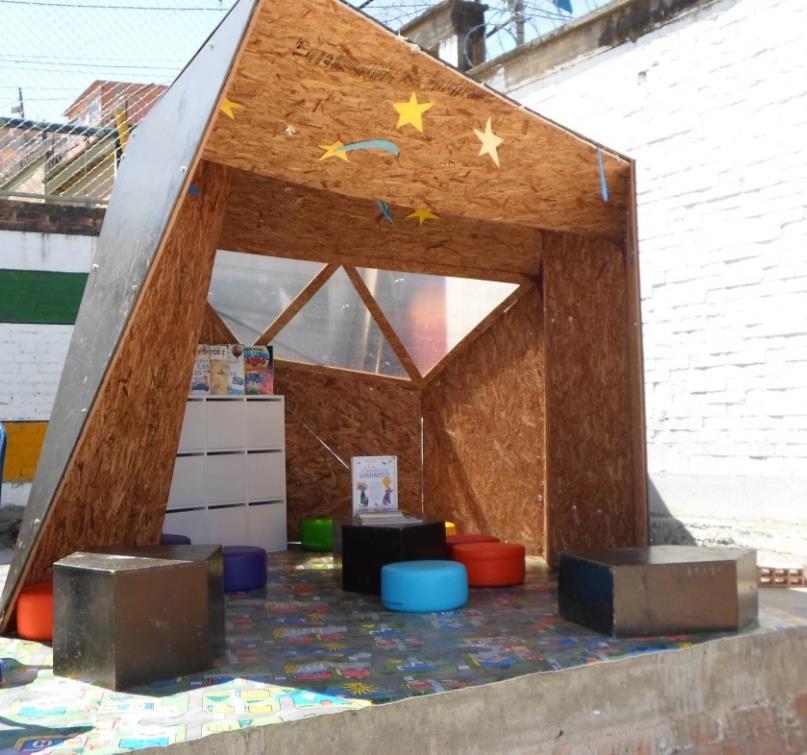

“Fundación Pies Descalzos is a Colombian non-governmental organisation, created by the artist Shakira in 1997, that works to build a more equitable and inclusive country, with greater opportunities for children.”
Project donated to Fundación Pies Descalzos, Colegio Luis Carlos Galán sede Sierra Loma
The project Toy Box proposes that we, the students, (through the construction of a pavilion for children) go beyond the design of a project and be aware of everything that involves making it happen.”

“This exercise allows us to be in situations that resemble those occurring in the professional life of an architect; we must deal with budgets, schedules, suppliers, actual construction processes (among others) for the project to become what was expected. Besides this, the fact of working and experimenting with real materials at full scale allows us to understand of the nature of the materials chosen.
In other words, this exercise not only makes us aware of what it takes to realize a project but it also requires a lot of responsibility because it is a project that will have a user and be inhabited by the community. “
Juan Carlos Ardila , Michelle Arteaga , Claudia Betancur, Daniel Bonilla, Ana Gabriela Diaz , Maria Garces, Maria Parra, Maria Roa, Daniel Rodriguez, Marisol Rodriguez, Daniel Ruiz, Juan Fernando Usubillaga, Catalina Valderrama, Maria Isabel Yañez
Tutors: Carolina Rodríguez Bernal (coordinator)



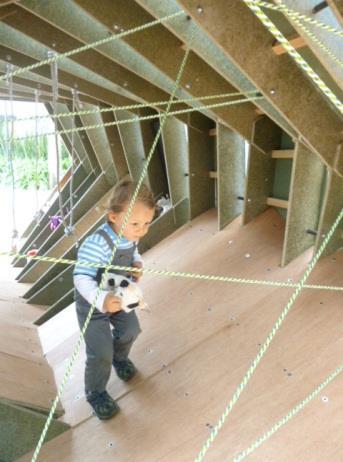
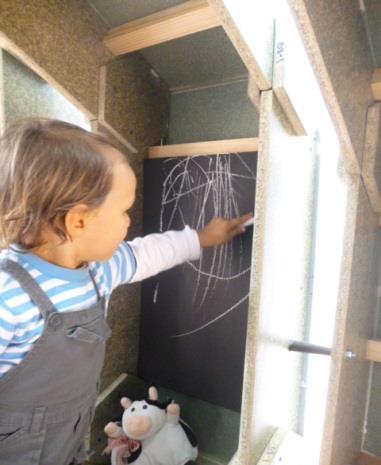





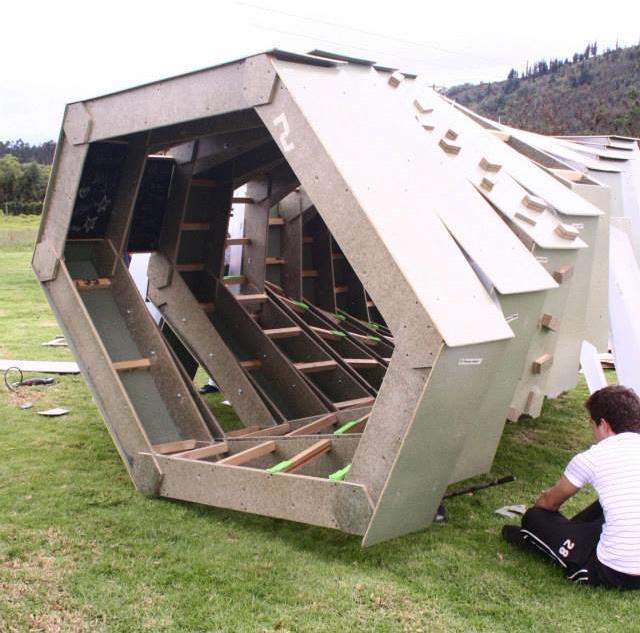

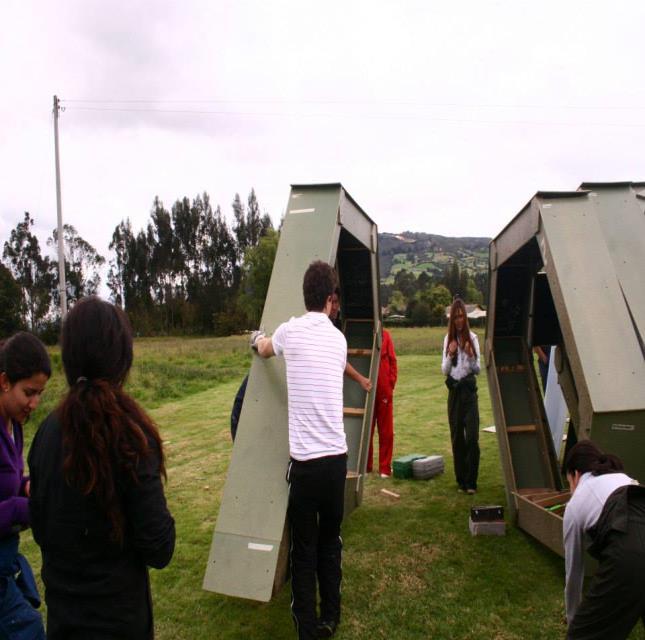
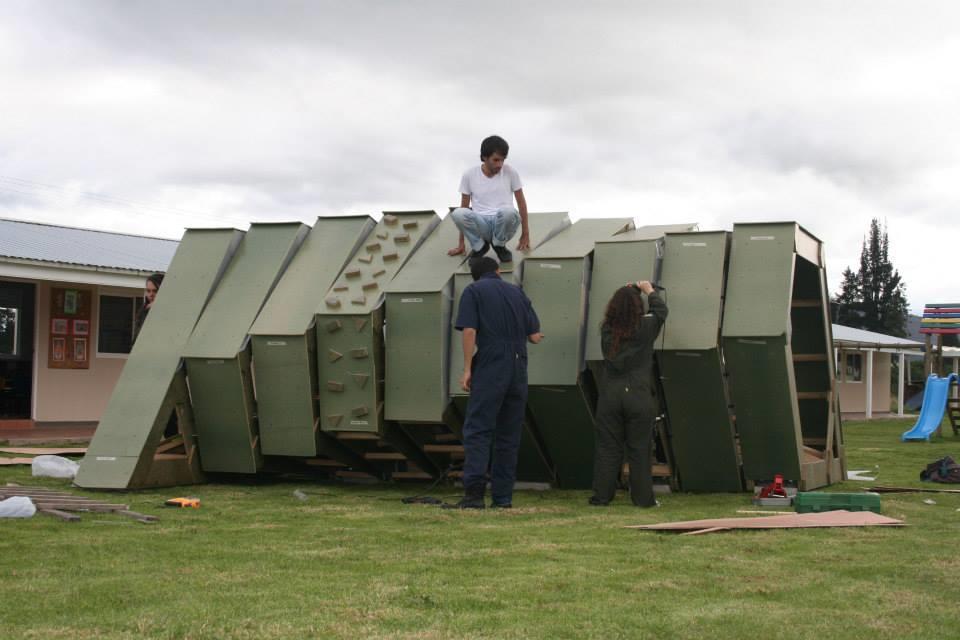

“The mission of this association is to "promote communities with a view to improving their quality of life with the participation of women, as generators of cultural changes in the fight against poverty and the projection of nature."
Taken from: http://www.ama.org.co
“The project is developed, based on a ‘nucleus’ from which components can be taken out to configure space around it.
The project changes according to the interaction and relationship generated between the components and the children.”

Students: Juan Alsina, Mateo Benavides, Daniel Cabra, Lizeth Figueroa, Mario Gutiérrez, Manuel Mejía, Nicolás Páez, Juan Pinzón, Camila Ramírez, Juan Ramos, Jorge Rico, Camilo Rodriguez, María Lucia Rodríguez, Alina Vargas, Nicolás Velandia.
Tutors: Carolina Rodríguez Bernal (coordinator)
Rafael Villazón








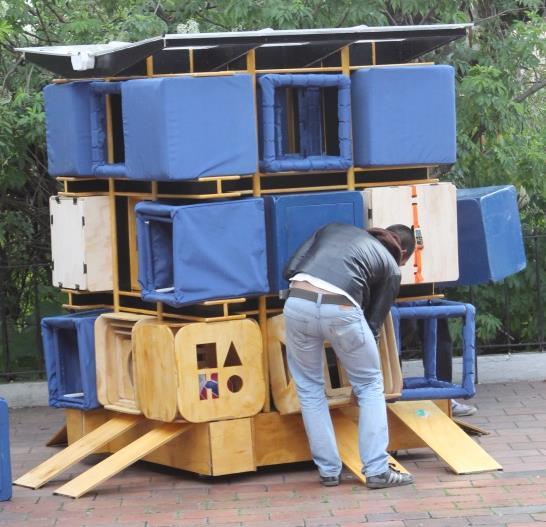




The mission of this foundation is to " restore the rights of children who have been violated in their fundamental privileges and ensure that children living in extreme poverty enjoy their entitlement to nutrition and education.”
Taken from: http://www.sanmauricio.org
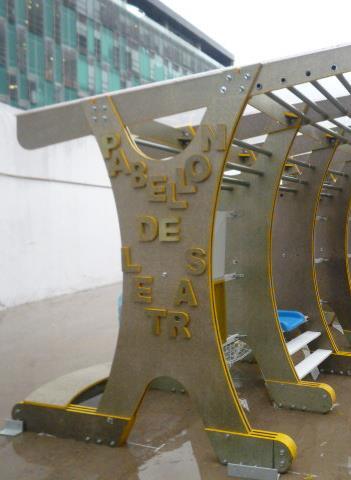
"I learned how to work in large teams in order to achieve simultaneous tasks in an orderly and successful manner.”
Angélica Rodríguez ,Nicolás Colorado ,María Alejandra Peñuela, Gabriella Durán, Juliana Pinto, Diego Hincapié, Nathalia Butrón, Carla Arciniegas, Paola Moreno, Paola
Castañeda, Daniel Higuera, Diego Martínez, Nelson Herrera, María Camila Morales, Niyereth Vélez, Daniela Benítez
“Words Pavilion was a project of a learning-through-play space for children. The structure of the pavilion is formed by of a modular system comprising a series of linked panels. The shape, geometry and distance between modules is given by the dimensions of donated metal panels used to create the enclosure. The project was design to provide a covered stage for dancing, theater performances and play”







“Our motto remains focused on reaching interest in the daily lives of families in a thoughtful, respectful and committed way. We aim to continue highlighting their role as the main educators of good citizens. ‘EDUCATE FAMILY FIRST’ is a principle of institutional integration which becomes the pinnacle for the students of our school.”
Taken from: http://www.sabiocaldas.edu.co



 Project donated to Gimnasio Sabio Caldas
Project donated to Gimnasio Sabio Caldas

“The primary aim of the pavilion was to provide a playground space suitable to promote the development of psychomotor skills and encourage imagination in children between 4 and 8 years old.”
“ The design strategy was to use movable elements that would generate two types of spaces. One space is fixed in place, while the other rests on a rails, generating different spatial relationships.”
“The project seeks to understand the needs of children and translates them into two structural modules, where space is the protagonist.”
Juan Manuel Guauque, Diana Quintero, German David Osorio, Mateo Montebello, Adriana Lancheros, Sergio Gomez, Angela Tenorio, Maria Camila Blanco, Daniele Armuzza, Juan Pablo Castillo, Alejandra Giron, Alejandro Cordoba, Carlos Quintero, Juan Sebastian Cruz, Sebastian Izquierdo, Maria Antonia Cartagena.



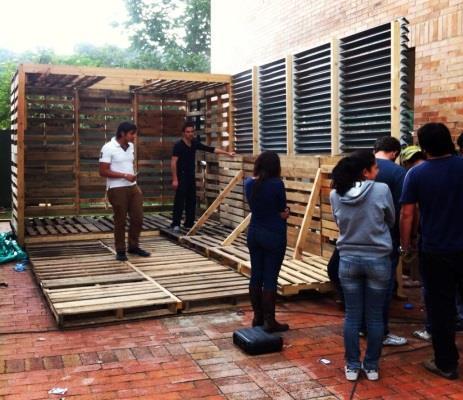


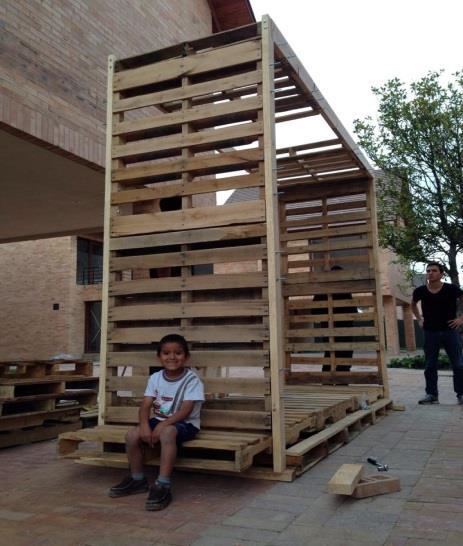
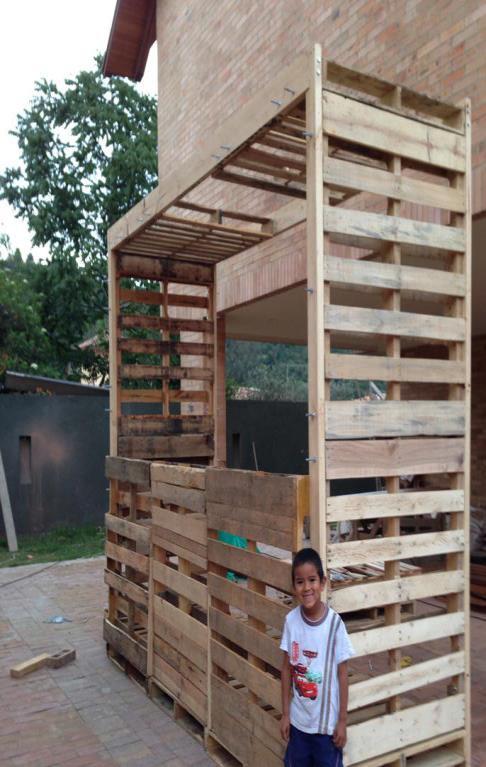
“The Fundacion Escuela Taller de Bogotá provides job training in traditional trades such as carpentry, food preparation, handmade paper and construction. It focuses on the connection between knowing and doing, self awareness, autonomy and self determination, as essential elements that enable employment in the world. It aims to contribute to the individuals in Colombia that help to change the current circumstances for an environment of peace.”
 Taken from: http://www.escuelataller.org
Taken from: http://www.escuelataller.org
“ With this project we learned that building architecture represents more than the simple act of stacking different types of materials and shapes to obtain a habitable result. There is a complicated process, behind each project, that involves understanding and visualising how a large group of people, with different skills, can interact to achieve the same goal: the realisation of an idea. [In this process] each person leaves their personal beliefs and opinions behind to become part of a group that thinks and acts as one, bridging the differences between members and learning to live with others, thus taking ownership of the project.”
Students: Natalia Bonilla, Luisa Camacho, Juan David Maldonado, Juliana Medina, Juan Sebastian Mendoza, Juliana Michelsen, Jorge Andrés Murcia, Camilo Olano, Tania Ormanza, Juan Camilo Ortegon, Andres Felipe Palacios, Nicolas Picalua, Marcela Torres, Julian Valderrama

Juan Carlos Rojas
Sponsorship: Inmunizadora Serrano Gómez, Masisa
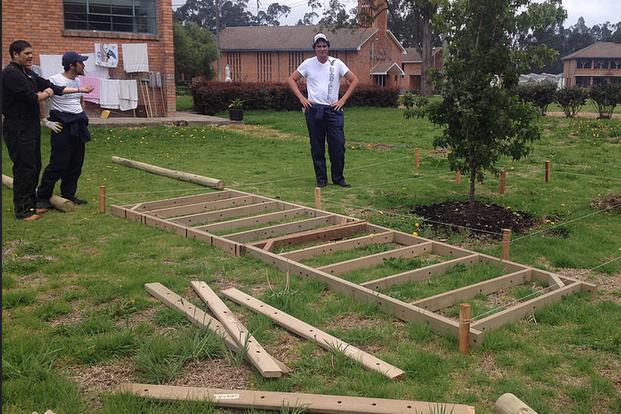








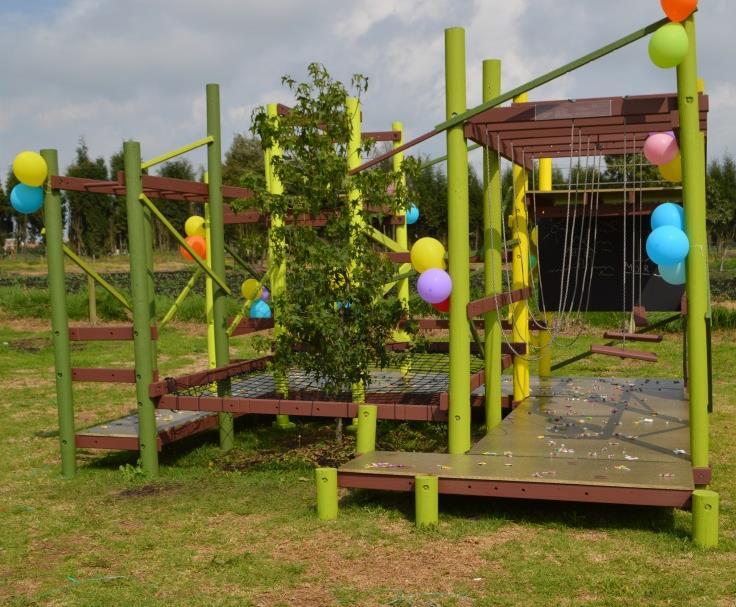
Inclusive objectives within this institution are: “ To provide comprehensive care for children, meeting their basic needs, promoting their physical and psychosocial development, with the participation of family and community.

[This is achieved] through activities that support family care, school integration, health care and spiritual growth.”
“ To contribute to the development and improvement of our country by educating responsible, honourable, respectful and selfconfident individuals, who will build a better future for generations to come in Colombia.”
“To ensure that children are integrated into the community and not remain socially marginalised.“
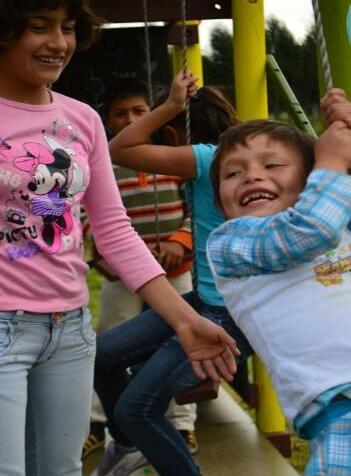
Taken from:www.ciudaddelnino-a.com

Project donated to Instituto Cristiano de San Pablo Ciudad del Niño y de la Niña, Madrid, Colombia
Pandora was a project in which different experiences and views were the basis for the continuous development of the idea. Now that everything comes to an end, it leaves me, as a result, the satisfaction of a great accomplishment. Immersing myself into the development of Pandora was amazing; being able to fabricate the project was wonderful. I could find contrast and similarities in the way that my group mates worked. However, patience and tolerance were the ‘weapons of battle’ to bring a project together, which in my view was satisfactory. I will remember also the simplicity of the details… that not everything in life has a complex solution or exceeds the limits or magnitude of the project. I learned that if you do not have a clear idea of a possible solution to a problem, you should take measures and consult other people to see the problem from a different perspective.”
Reflection by the student Gabriel Garcia
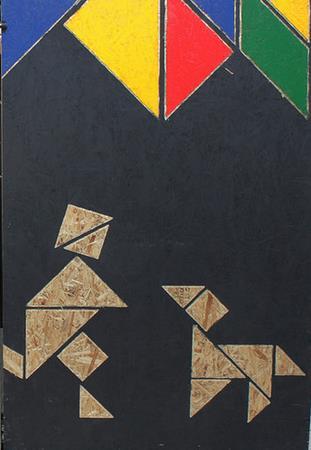
Students: America Albarracin, Gautier Boutio, Andres Chaves, Pablo Forero, Gabriel Garcia, Matteo Gaudiuso, Andes Gonzalez, Sergio Marin, Camilo Nogera, German Puentes, Daniel Ruiz, Helena Saenz, Juan M. Suarez, Juan D. Zorro.
Tutors: Carolina Rodríguez Bernal (coordinator)
Juan Carlos Rojas
Sponsorship:
Inmunizadora Serrano Gómez, Masisa

Pandora was originally destined to be donated to Fundación San Antonio. Unfortunately, the project was destroyed due to an act of vandalism. However, other students helped to rebuild and substitute it with a new project: Neptuno 2014.2, which was subsequently donated.


“We had to work to evolve the design of the pavilion, we made several changes to optimise it and solve technical details. When we had an advanced enough design, we divided the team into three groups: management, documentation and construction. Given the short time that we had to develop the project ... we had to be practical and efficient. Knowing that the model chosen had to be modified, we all contributed with ideas to improve it... eventually we realised this had to be a collective effort because the pavilion finally belongs to everyone.”

Daniela Gómez, Daniel Morales, Joyce van Neiuwerburgh, Manuel Coronado, Alan García, Carlos David López, Pablo Londoño, Laura Martínez, Néstor Penagos, Federico Robinson, Giacobbe Tarquino, Pablo Trujillo, María Fernanda Tuta, Andrés Valenzuela, Daniel Abaunza, Marcela Amaya, Natalia Andrade, Santiago Ardila, Matthias Baratte, Federico Bermúdez, Andrés Calderón, Sebastián García, Juan David Lizarazo, Daniela López, Angie Pardo, Tatiana Rodríguez, María Alejandra Rozo, Andrés
Sogamoso, Jessica Vargas.
Tutors: Carolina Rodríguez Bernal (coordinator)
Juan Carlos Rojas
“The pavilion was conceived as a dynamic space that could facilitate the meeting and interaction of children. It encourages different dynamics amongst its users, allowing a place of fun, learning and relaxation. It is hoped that children can interact with the different materials and shapes that composed the project, which were designed for sensory and motor stimulation.”



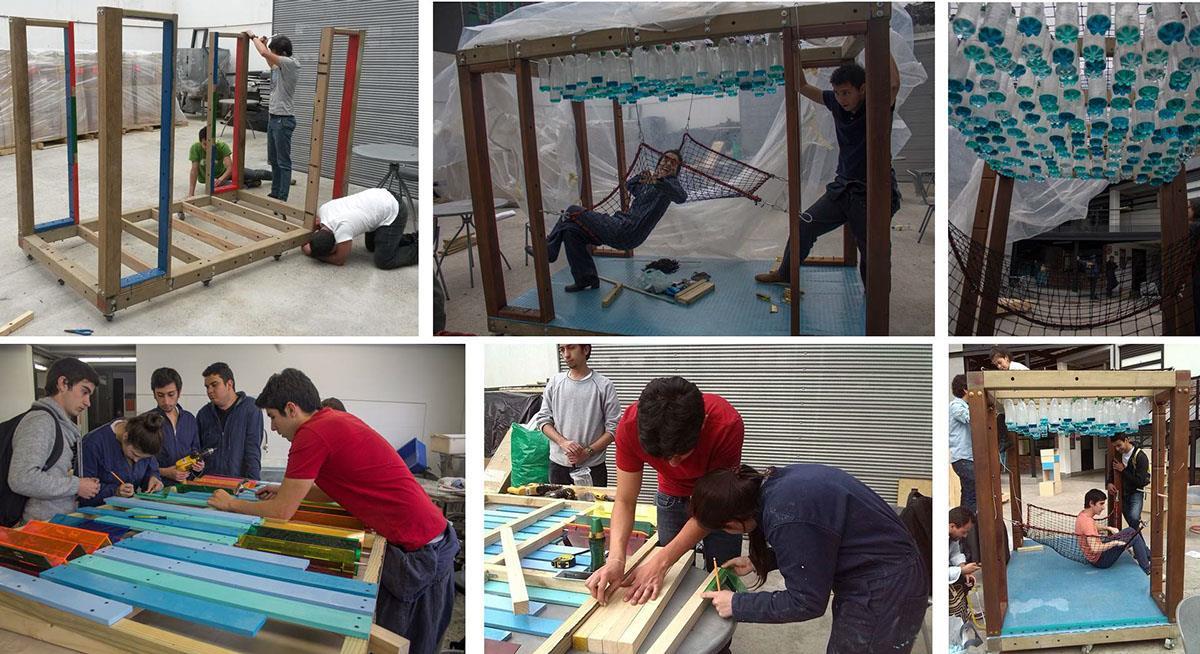

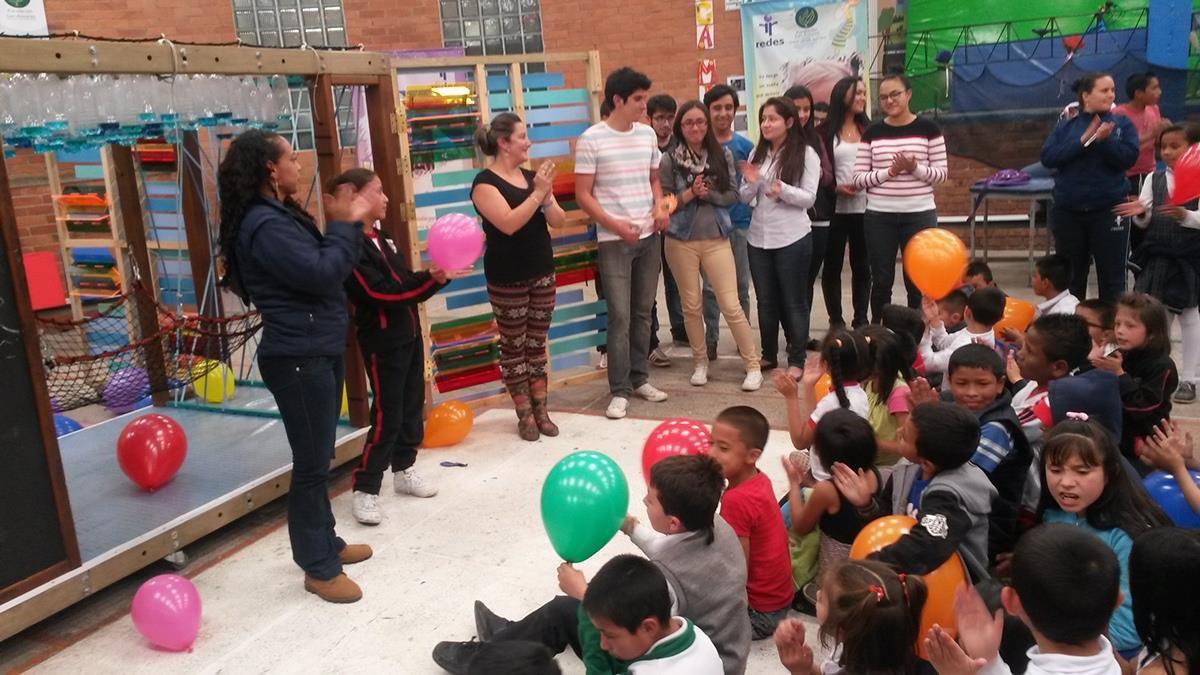
"Fundación San Antonio is a reliable, serious and competent entity with over 115 years of experience in the care of children and adolescents in situations of high vulnerability. San Antonio Foundation is a non-profit organisation of the Archdiocese of Bogota, whose corporate purpose is to fully serve children and adolescents, especially those who are in extreme poverty and high risk.”
Taken from:http://fundacionsanantonio.org
“The development of this pavilion has taught us several lessons regarding planning, implementation and coordination. We learnt that it is vital to have a clear and fully specified design from the beginning and know exactly how to develop the whole project … During the project implementation, the most important lesson was to have appropriate training and supervision… We recognised the need to generate commitment amongst the team members since the result was going to be better if were all committed.”
Daniela Gómez, Daniel Morales, Joyce van Neiuwerburgh, Manuel Coronado, Alan García, Carlos David López, Pablo Londoño, Laura Martínez, Nestor Penagos, Federico Robinson, Giacobbe Tarquino, Pablo Trujillo, María Fernanda Tuta, Andrés Valenzuela.
Tutors:
Carolina Rodríguez Bernal (coordinator)
Juan Carlos Rojas Sponsors: Madecentro

Armadillo is a pavilion designed to provide a covered stage where children and young people studying at Cakike foundation could perform in front of an audience or practise music under a protected outdoor area. Its shell-like-shape comfortably hosts a small group of children and allows a suitable acoustic environment. It opens up towards a semi circular seating area whilst creating an intimate backdrop, aimed to inspire security and confidence for the performers. The pavilion sits on an existing oval plaza; however, it was designed to be relocated in the future to a similar setting in a nearby property. Hence, the structure is modular and easy to assemble and the foundations are not directly attached to the ground.
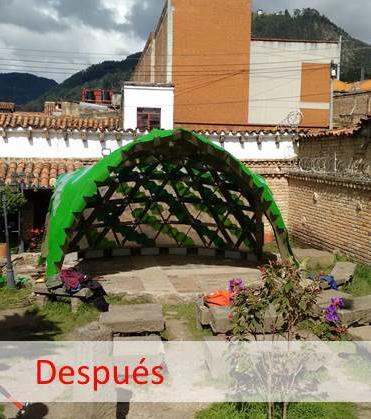







“CAKIKE is a non profit organisation established in 2009 in Colombia to support and encourage children and youngsters in need, through high quality musical projects. Cakike focuses on inspiring students to fulfil their artistic and human potential in an environment of growth and comprehensive training. This as a way to empower and help them to develop solid tools, principles and values for life.”
Taken from: http://cakike.org
“Thanks to this project, as students we were able to learn to think about architecture from a different point of view, based on specific conditions and needs that inspired the exploration and search for the best answer. The class gave us learning tools to accomplish our ideas, ground them and find viable ways to materialise them.”
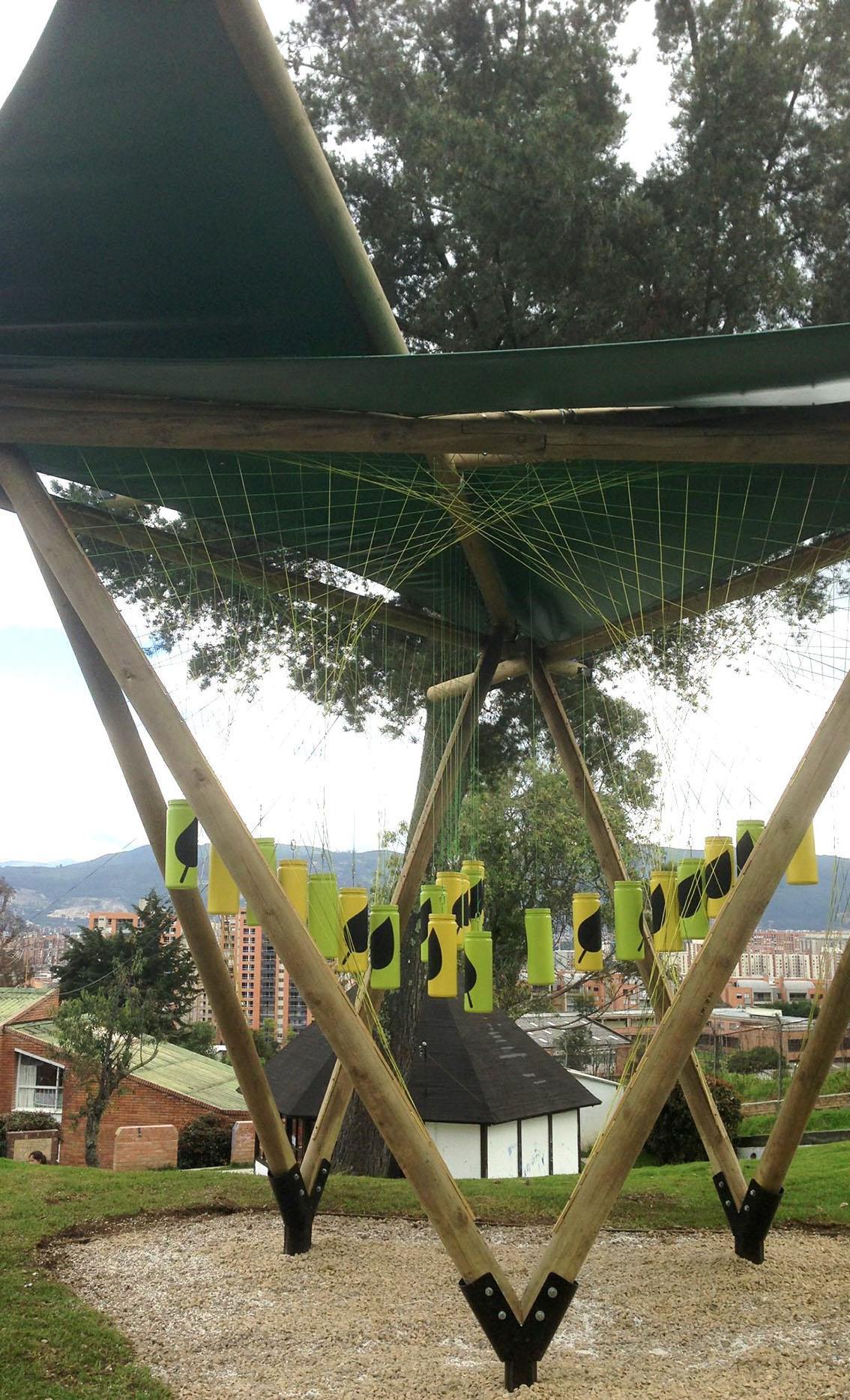
Daniel Abaunza, Marcela Amaya, Natalia Andrade, Santiago Ardila, Matthias Baratte, Federico Bermúdez, Andrés Calderón, Sebastián García, Juan David Lizarazo, Daniela López, Angie Pardo, Tatiana Rodríguez, María Alejandra Rozo, Andrés Sogamoso, Jessica Vargas.
Tutors: Carolina Rodríguez Bernal (coordinator)
Juan Carlos Rojas Sponsors: Madecentro
“The Tree of Secrets is a pavilion conceived as a place for memory and reflection and also a space for meeting, sharing and learning. Conceptually, the tree is meant to represent protection and security for children at CRAN Foundation, who arrive in a vulnerable state after suffering neglect and abuse. It is designed with suspended containers, so children can store some special belongings that they bring with them. It is also meant to represent life and hope providing a covered space where children can play and share with their new friends and community. The ‘foliage’ of the tree shields an area where they can build up new memories and develop a sense of belonging.”


 Description by the students
Description by the students


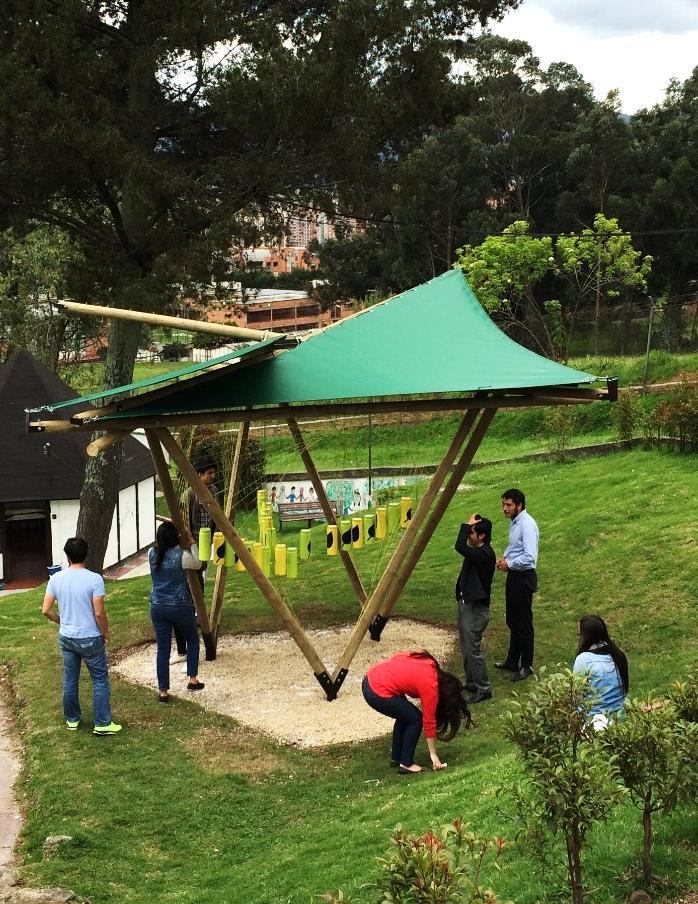
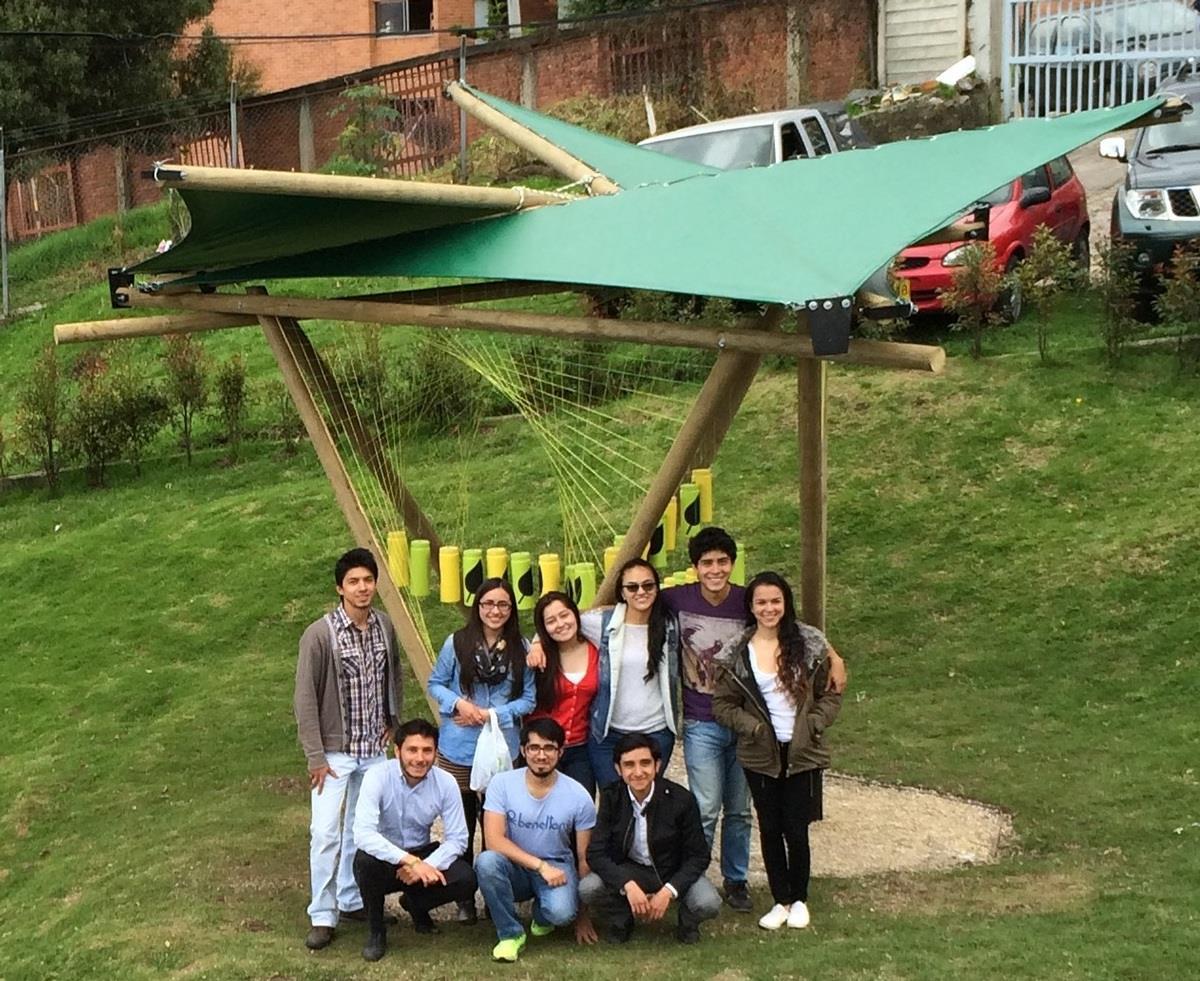
“CRAN is a non-profit organization dedicated to help and protect children, adolescents and young people, who have been victims of the armed conflict in Colombia or have been abandoned by their families. Their mission is to provide the necessary conditions for them to rebuild their lives in a loving and caring environment.”
Taken from: http://www.cran.org.co
“Despite all the drawbacks emerging throughout the process, the objectives were achieved and now FANA has a pavilion that meets all the desired requirements. In addition, we learned to work together and managed to meet the established datelines. We had the experience of building something that was designed by us and also benefits children, in that way contributing to our, and their learning process."

Diego Bravo, Daniel Garcia, Gabriel Molina,Sebastian Moreno, Santiango Angulo, David Sarmiento, Andrew Hu, Sergio Rincon, Paolo Zurk, Agustin Lopez, Daniela Villamil, Laura Santana, Raquel Sanchez, Mariana Naranjo
Tutors: Carolina Rodríguez Bernal (coordinator)
Juan Carlos Rojas
Sponsors: Madecentro
“Following the principles that the foundation has sought for 43 years: offering protection, shelter and love; we projected an enclosure that creates a comfortable and cozy space and encourages a sense of belonging. It comprises a system of interlocking ribs, which allows permeability between the inside and the outside, giving children the opportunity to safely interact with nature and the surrounding green areas. This ’virtual’ cave generates a controlled environment for drawing, playing, dancing and reading activities; where children can put into practice values such as responsibility, respect, protection, companionship and love!”




Description by the students
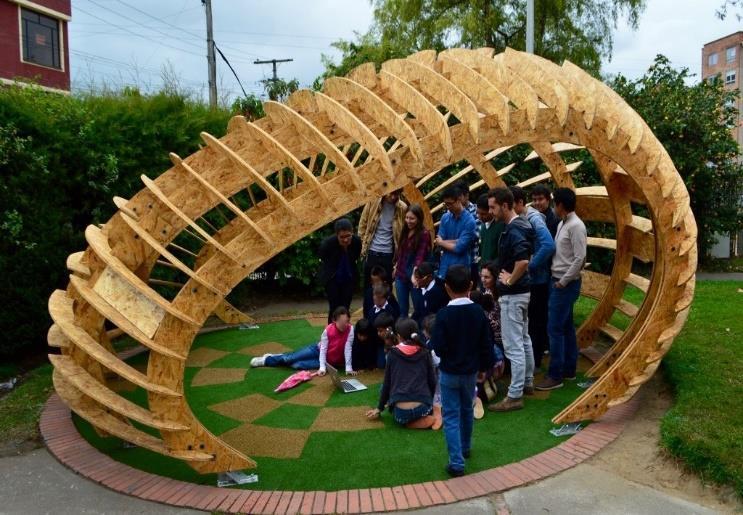
“FANA is the Foundation for the Support of Abandoned Children, a social private institution, a non-profit organisation, devoted to the comprehensive protection of children. In FANA, family systems are strengthened to turn them into guarantors of the children rights, so that children within their family can develop their potentials and be happy.”
Taken from: http://www.fundacionfana.org
“This project brought welfare and happiness to children in FANA, allowing them to have fun in a friendly and safe space. The support we received through the project was very important to us, as it directly benefitted children, having a positive impact on their daily lives here at the foundation. We thank the time, dedication, effort and commitment of the students and the Universidad de Los Andes.”

 Elena Martinez, Director of FANA
Elena Martinez, Director of FANA
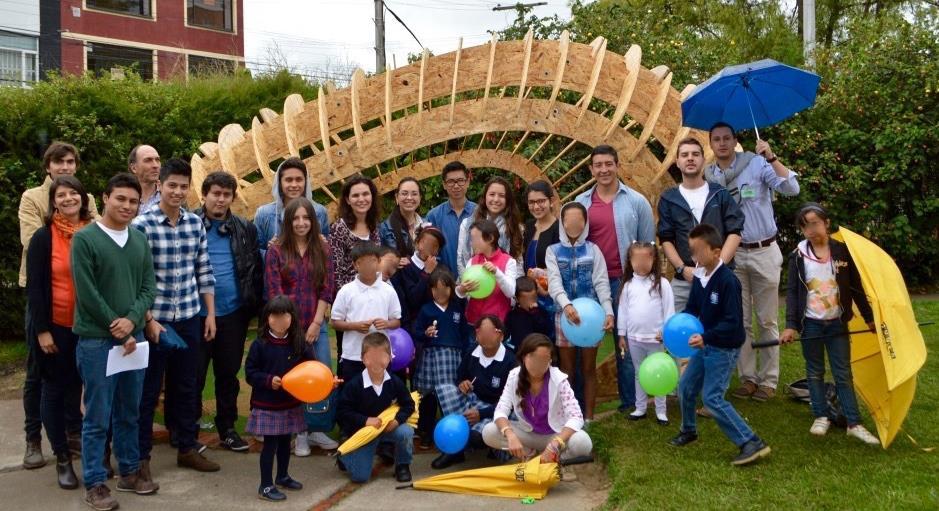




“The experience that we had during the whole process of the project has fuelled our passion as architects and made us aware of the social commitment that we have to others. We evidence how every decision made had an impact in reality. This changed our original conceptions, since we never had to face before an academic exercise of this kind."
Students: Ivan C. Nieto, Natalia Estevez, Carlos Rodriguez, Laura MasJuan, Alfredo Escallon, Paula Gil, Diwan Corre, Daniela Montes, Julian Martinez, Luisa Mosuqera, Hernan Velez, Martin Vieira, Felipe Ramirez, Jorge Garcia
Tutors: Carolina Rodríguez Bernal (coordinator)
Juan Carlos Rojas Sponsors: Madecentro
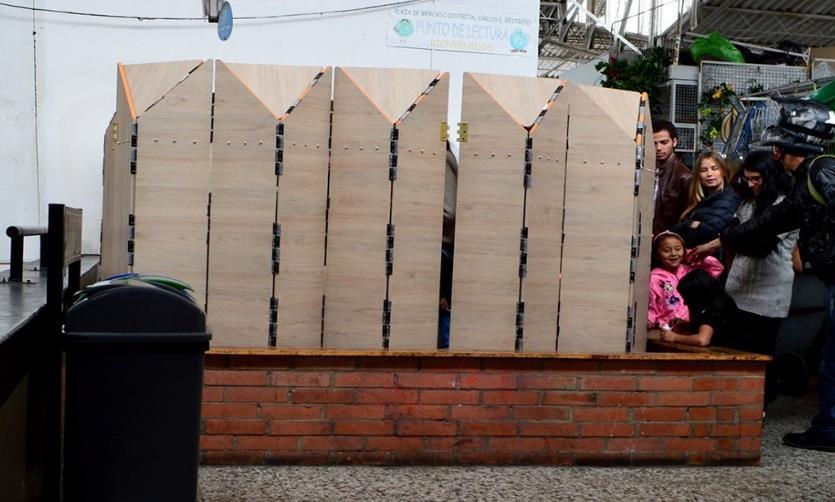
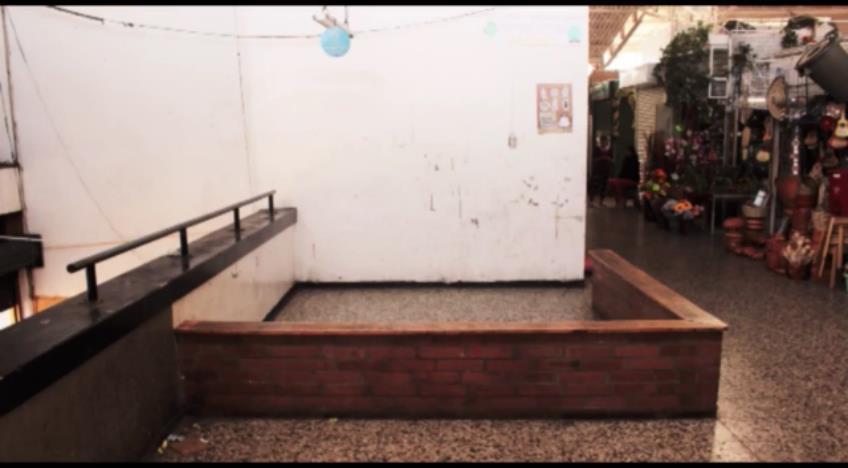
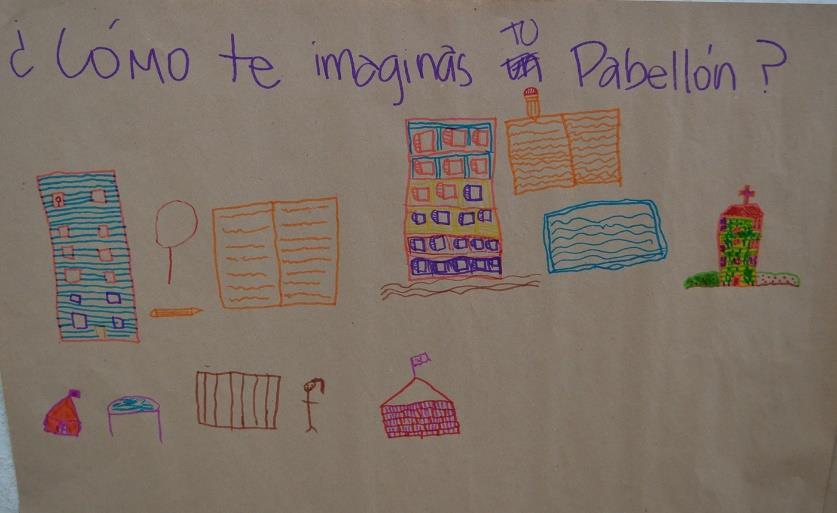
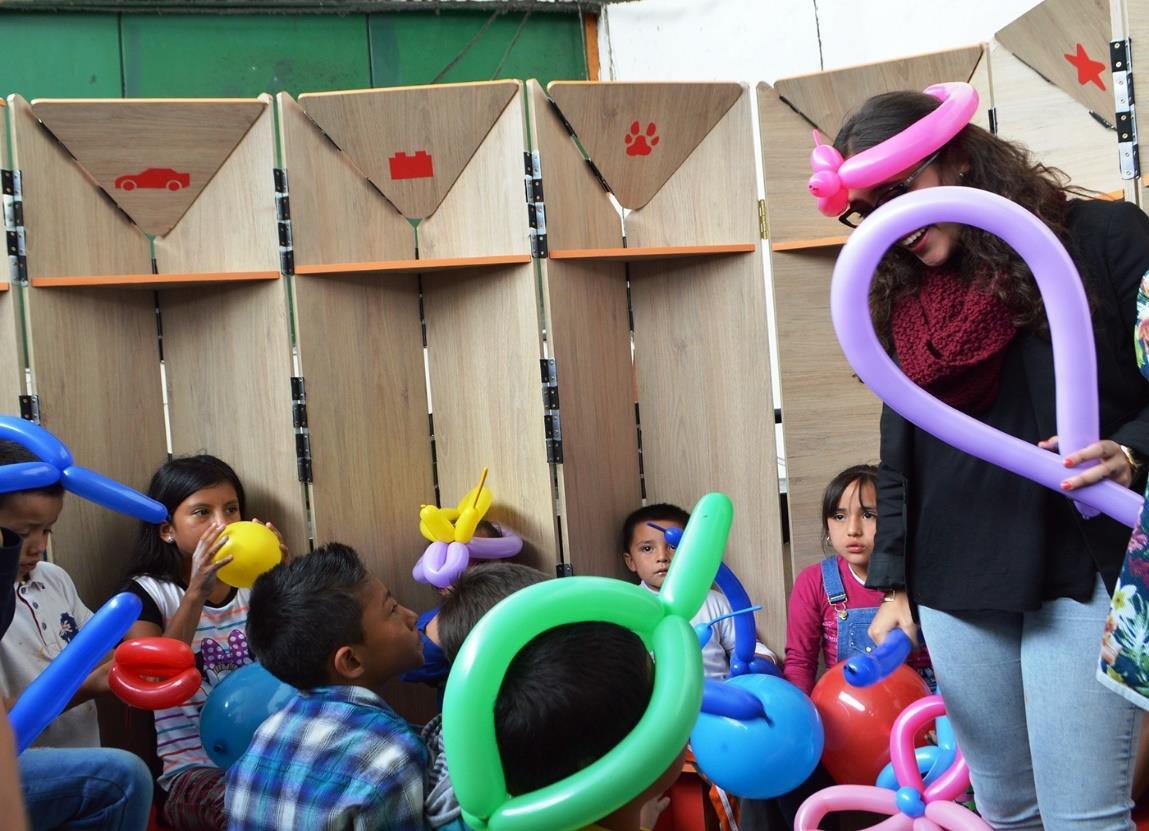

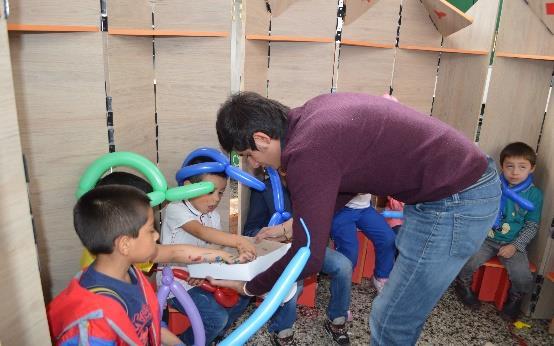

“The purpose of PANN (Foundation For The Love Of The Children) is to work directly on the prevention of child abuse in our country [Colombia]. We aim to provide welfare for children, their families and their environment.”
Taken from: http://www.fundapann.org
“The project illustrated here seeks to support the foundation objectives and activities, by constructing a mobile library space, which can be transported to different places in Bogota. The first operating point of the library is the marketplace del Barrio Restrepo, characterised by its high commercial activity.”


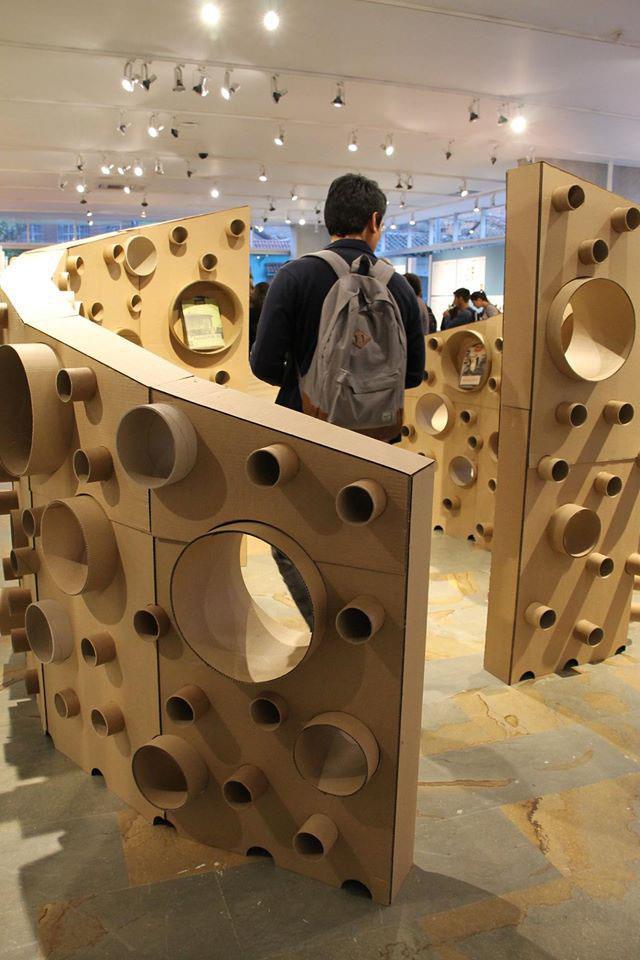
“This exercise allowed us to explore innovative design ideas. In the process we learnt how to efficiently work in teams and individually, using different management tools. We had to manage our time and work at a distance with students from Nottingham. Hence, it was essential to coordinate the project appropriately from the beginning, in order to avoid complications during its execution.”
Students: Diego Bravo, Daniel Garcia, Gabriel Molina,Sebastian Moreno, Santiango Angulo, David Sarmiento, Andrew Hu, Sergio Rincon, Paolo Zurk, Agustin Lopez, Daniela Villamil, Laura Santana, Raquel Sanchez, Mariana Naranjo, Raluca Burlacu (Nottingham University), Boyan Hristov (Nottingham University)
“
The aim of this exercise was to design and build a stand, which could be used in the end of the year exhibition of the Faculty of Architecture at the University of Andes, Bogota, Colombia and The School of the Built Environment at Nottingham University, UK. We had the opportunity to explore with recyclable and alternative materials in order to propose innovative structures.”


 Description by the students
Description by the students


